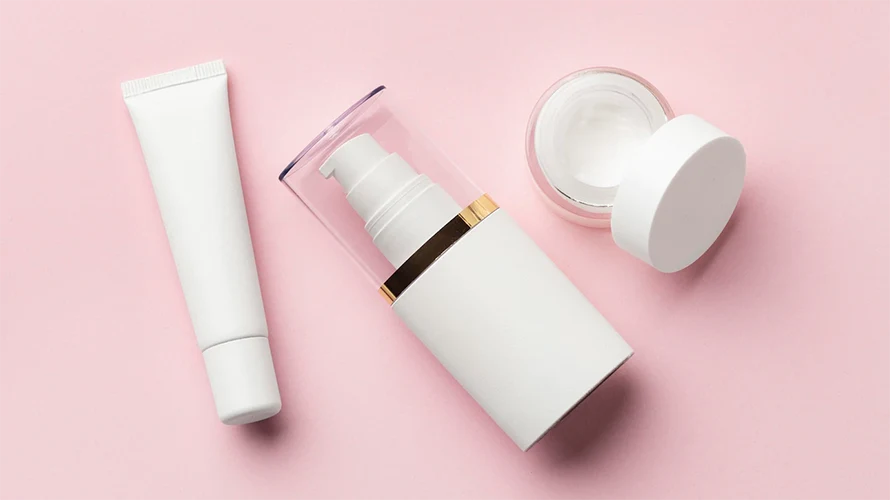A quick overview of the topics covered in this article.
Subscribe to the UKPACK newsletter to receive regular updates on the company, products, services, upcoming exhibitions and more.
Designing cosmetic packaging is a critical part of the beauty industry. In today’s highly competitive marketplace, it is essential to create packaging that not only catches the eye of the consumer but also communicates the values of the brand.
In this blog post, we will discuss the key elements of effective cosmetic packaging design and how to create packaging that stands out in the marketplace.
Strategies for Standing Out in a Crowded Marketplace
Good packaging is an essential part of the cosmetics industry. It is the first thing that the consumer sees when they encounter your product, and it plays a vital role in communicating the brand’s identity and values. Effective packaging design can make or break a product in the marketplace. With so many products available, it is crucial to create packaging that not only catches the consumer’s attention but also communicates the product’s unique features.
Understanding Your Target Market
Before beginning the design process, it is essential to define your target market. Who are you designing the packaging for? What are their needs and preferences? What are their values? Understanding your target market is essential to creating packaging that resonates with them.
A. Defining your target market
To define your target market, you must consider factors such as age, gender, lifestyle, and purchasing habits. These factors will help you identify the specific needs and preferences of your target market.
B. Understanding your target market’s needs and preferences
Once you have defined your target market, you must identify their specific needs and preferences. For example, if your target market is young women, you may want to design packaging that is fun, vibrant, and eye-catching.
C. Researching your competition
It is also essential to research your competition. What are they doing? What is working for them, and what isn’t? This research can help you identify gaps in the market and create packaging that stands out from the competition.
Key Design Elements
Once you have a clear understanding of your target market, it’s time to start thinking about the key design elements that will make your packaging stand out.
A. Color selection
Color is an essential element of packaging design. It can evoke emotions, communicate brand values, and catch the consumer’s eye. When selecting colors for your packaging, consider your brand identity, target market, and the product’s features.
B. Typography
Typography is another critical element of packaging design. It can communicate the product’s benefits, create a mood, and enhance the overall design. When selecting typography, consider legibility, hierarchy, and the overall style.
C. Graphics and imagery
Graphics and imagery can help create a visual connection between the consumer and the product. When selecting graphics and imagery, consider the product’s features, target market, and overall brand identity.
D. Materials and finishes
The materials and finishes used in packaging design can have a significant impact on the consumer’s perception of the product. When selecting materials and finishes, consider the product’s features, target market, and overall brand identity. Additionally, sustainability is becoming an increasingly important factor in packaging design. When possible, consider using sustainable materials and processes.
Packaging Structures and Shapes
The structure and shape of your packaging can be just as important as the design elements. The packaging structure and shape can help communicate the product’s features, make the product more convenient to use, and make the product stand out in the marketplace.
A. Common packaging structures
There are several common packaging structures, including bottles, jars, tubes, and compacts. Each structure has its advantages and disadvantages and should be selected based on the product’s needs and target market.
B. Factors to consider when choosing a packaging structure
When selecting a packaging structure, consider the product’s viscosity, shelf life, and intended use. Additionally, the packaging structure should be convenient to use and store.
C. Importance of sustainability in packaging design
Sustainability is becoming an increasingly important factor in packaging design. Consumers are becoming more aware of the impact that packaging has on the environment, and many are choosing products that are packaged in environmentally-friendly materials. When possible, consider using sustainable materials and processes in your packaging design. This can include using materials that are biodegradable, recyclable, or made from renewable resources. Additionally, consider ways to reduce waste in the packaging process, such as using minimal packaging or designing packaging that can be reused.
Legal and Regulatory Considerations
In addition to the design elements, it is also essential to consider the legal and regulatory requirements for cosmetic packaging. There are regulations governing cosmetic packaging to ensure that it is safe for consumers and does not mislead them.
A. Regulations governing cosmetic packaging
The regulations governing cosmetic packaging vary by country and region but typically cover areas such as ingredient labeling, safety, and environmental impact.
B. Importance of complying with regulations
It is essential to comply with these regulations to ensure that your product is safe for consumers and does not mislead them. Non-compliance can result in fines or legal action, which can be costly for your brand.
C. Key information to include on packaging
When designing your packaging, ensure that it includes all the necessary information required by regulations. This may include ingredient lists, warnings, and usage instructions.
Testing and Prototyping
Once you have a design for your packaging, it is essential to test and prototype it. Testing and prototyping can help identify any potential issues with the design and ensure that it is functional and effective.
A. Importance of testing and prototyping
Testing and prototyping can help identify any issues with the design before it is produced in large quantities. This can help save time and money in the long run.
B. Methods for testing packaging designs
There are several methods for testing packaging designs, including focus groups, surveys, and mockups. Each method has its advantages and disadvantages and should be selected based on the product’s needs and target market.
C. Tips for creating effective prototypes
When creating prototypes, consider using materials that are similar to the final product. Additionally, consider the product’s functionality, durability, and ease of use.
Conclusion
Effective packaging design is critical to the success of a cosmetic product. By understanding your target market, selecting key design elements, considering the packaging structure and shape, complying with regulations, and testing and prototyping, you can create packaging that stands out in the marketplace and resonates with your target audience. Additionally, by considering sustainability in your packaging design, you can create packaging that not only communicates your brand’s values but also minimizes its impact on the environment.

Lucas Ji, Founder of UKPACK and Chief Packaging Designer, has 15 years of experience designing sustainable packaging for global beauty and beverage brands. His Red Dot Award-winning solutions have helped 50+ premium brands transition to eco-friendly packaging.

